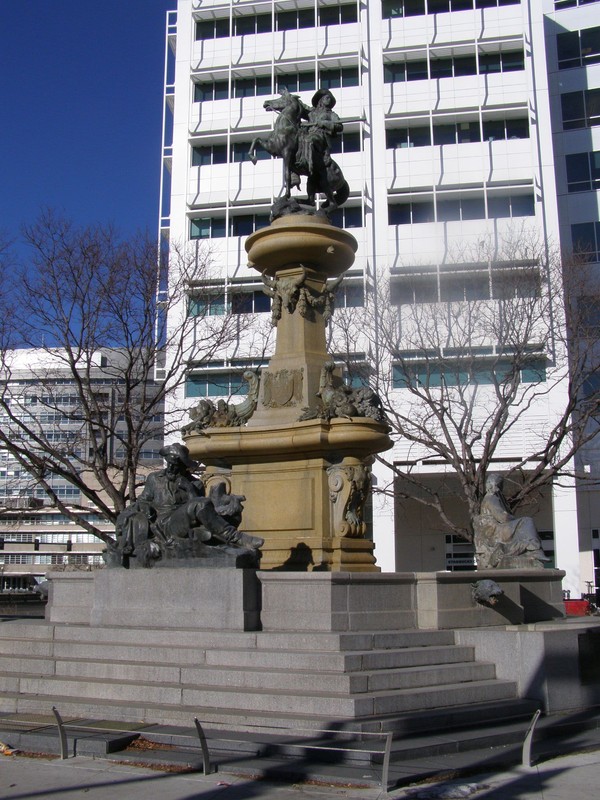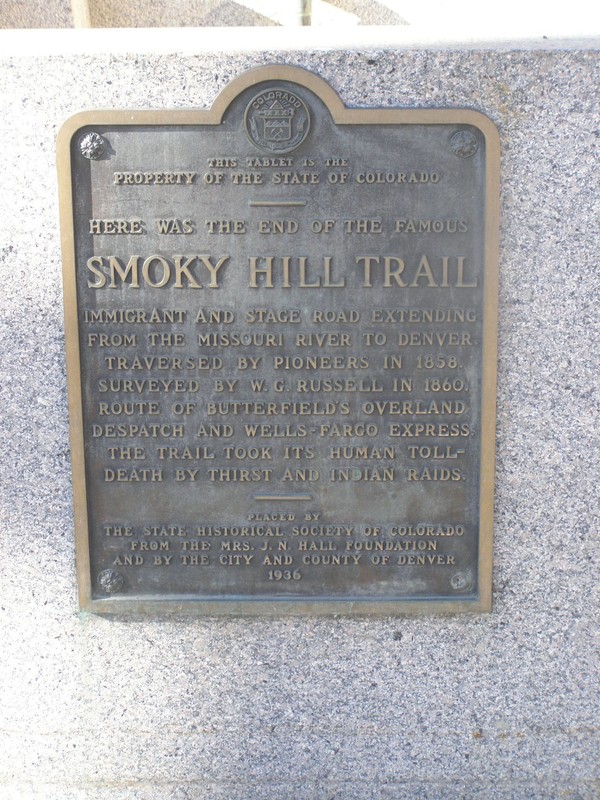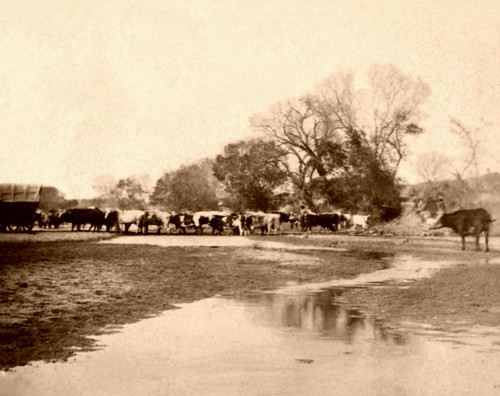Pioneer Monument and the Smoky Hill Trail
Introduction
Text-to-speech Audio
Images
Pioneer Monument in Denver

Smoky Hill Trail Historical Marker

Smoky Hill Trail in Eastern Colorado

Cows along the Smoky Hill River in Ellsworth, Kansas. 1867

Backstory and Context
Text-to-speech Audio
History of the Smoky Hill Trail
In 1859, prospectors found gold along Cherry Creek in modern-day Denver, and as quick as the word spread, thousands of prospectors began traversing the Rocky Mountains to seek their fortunes. However, there was no official path crossing Kansas, connecting the East to Denver. The westernmost traveling point at that time was in Salina, part of the Oregon Trail. To quicken the route to Denver and make it safer, surveyors and frontiersman began taking the ancient trail along the Smoky Hill River that was used by Native Americans.
Although the trail was substantially harder and more dangerous than other prairie trails from the Missouri River to the Rockies, thousands of would-be prospectors, homesteaders, and soldiers traveled the Smoky Hill Trail between 1859 and 1865. Among the dangers included attacks by local tribes and scarce water supplies. Many survived the trip nonetheless, traveling in covered wagons or on foot pushing carts and wheelbarrows. Others, however, were not so fortunate.
Stagecoach transportation to Denver was established by 1865, and during the trail’s heyday, many famous individuals followed its route to Denver, including Wild Bill Hickock, Wyatt Earp, and Buffalo Bill Cody.1
